WATER FILTRATION AND METHODS
What is filtration and what are the water filtration methods?
It is a technique that is used to separate solids suspended in a fluid,
whether liquid or gas, using in the process a filter medium that is a porous material called a filter or sieve.
Filters generally retain larger solids while allowing fluid to pass through.
Therefore, it is important to know the best filtration method depending on the industry in which it will be applied.
Filtration is one of the most widely used methods for separating substances.
This method is used in different industries,
which is why there is a wide variety of filtration types depending on the range of precision needed.
Filtration with cartridge filters
They are one of the most used filtration products due to their usefulness in eliminating sediments and particles in water.
The solids that tend to be in the water are due to stormwater runoff and pipes in poor condition that can leave sediment in the water.
Generally, water that comes out of pipes is in poor condition and tends to become discolored, making it impossible to use in homes and businesses.
It is quite probable that incidents like clogging and deterioration of shower fixtures, water heaters, freezers, and valves will happen.
Water treatment companies employ cartridge filters in these situations to guarantee the usage of clean water.
These cartridges use a mechanical filtration process that physically prevents the flow of solids found in the water, acting as a kind of water.
These filters, if they are of high quality, contain porosity of an adequate size so that the water flows without sediments being able to pass through.
Cartridges can pick up large amounts of dirt if used on large surfaces.
A gradient density depth architecture is used by cartridge filters to remove suspended particles.
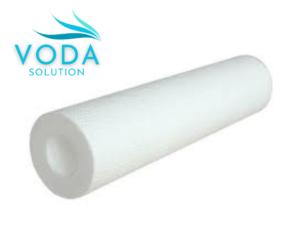
Filter Cartridges
Cartridges and Cartridge Holders
3M Cartridge Filters
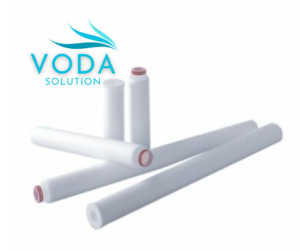
Filter Cartridges
Cartridges and Cartridge Holders
3M Cartridge Filters
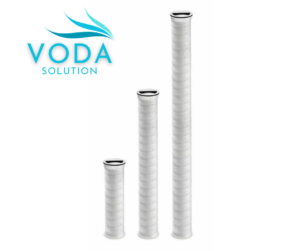
Filter Cartridges
Cartridges and Cartridge Holders
3M Cartridge Filters
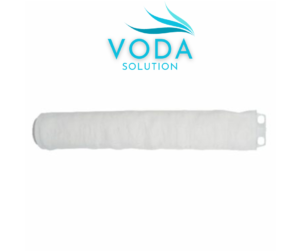
Filter Cartridges
Cartridges and Cartridge Holders
3M Cartridge Filters
Filtration with silica sand
Silica sand serves as support for drinking water, sewage and wastewater treatments, deep wells, aquariums and decorative treatments.
This type of sand is widely used in industrial filters to process wastewater and filter clean water.
A special characteristic of silica sand is that it has a grain size similar to each other and is a material that does not degrade and resists impurities in water,
such as solvents, acids, organic compounds and contaminants.
This material is used for filtration of water with low or medium loads of contaminants that require retention of particles up to 20 microns in size.
The filtration quality can vary depending on parameters such as the shape of the filter, height of the filter bed,
characteristics and granulometry of the filter medium.
Finally, it should be noted that their main function in filters is to trap contaminants that float in the liquid and allow water to pass through.
An advantage of the sand filter is that it requires a greater flow of backwashing than other deep bed filters, and this means that the filter cleaning is done in less time ,
therefore, there are savings in water and time.
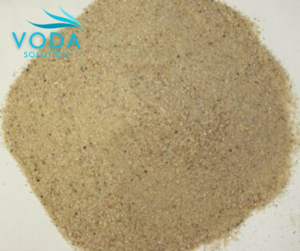
- Silica sand
Sands
Anthracites and Zeolites
Granular filter media
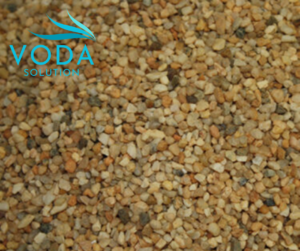
silica gravel
Sands
Anthracites and Zeolites
Granular filter media
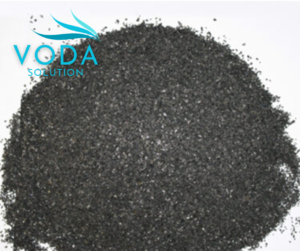
Granular filter media
Sands
Anthracites and Zeolites
Anthracite
Filtration with multi-bed or multimedia filters
This type of filters have the mission of removing solids suspended in water with a size of up to 15 micrometers or microns.
This means dust, pollen, small trash, insects, etc.
that is greater than the previously mentioned measurement,
retained in filters and will later be discarded through the drain at the time of backwashing.
type of filters are also known as deep bed filters where the upper bed of filter material has a larger size of fragments,
the water passes to a smaller layer to finally pass through a thin layer of fragments.
fines in the lower part supported by gravel.
Generally the shape of these filters is cylindrical and vertical,
they are made of steel, carbon or stainless and inside they contain interior polyethylene and fiberglass throughout the exterior.
Broadly speaking, these filters work in the following way,
the water enters through the upper part of the filter and flows downward through the beds, the water is collected at the bottom of the bed thanks to diffusers.
Multi-bed filters must be backwashed after a certain period of service in order to expel the solids,
that were retained and cause movement in the different beds of the filter and thus avoid cementation.
Typically the bed or multi-bed is made up of:
- Anthracite
- Silica sand
- Garnet
- Support silica gravel.
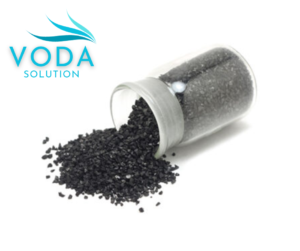
Equipment and supplies for water treatment
Activated carbon filter equipment
Coconut shell activated carbon equipment with manual valve
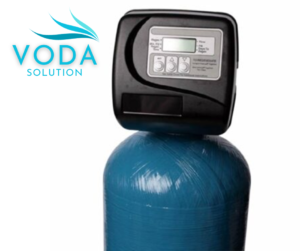
Activated carbon filter equipment
Automatic Coconut Shell Activated Carbon Equipment
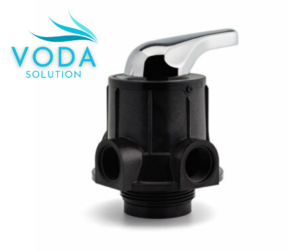
Activated carbon filter equipment
Activated carbon kit 8×44″ coconut shell
SELECT OPTIONS
Filtration with disc filters
Disc filters’ main function is to retain solids in the water.
Its filtration range is from 5 to 400 microns .
Its effectiveness is not only due to its slots, but also due to its geometry, angle, intersections, length and quantity.
Regarding its operation, the water flows from the outside to the channel in the center, the solids remain in the channels,
the largest ones on the outside and the smallest ones reach the inside.
This operation minimizes the frequency with which it will be necessary to clean discs, therefore, it works similar to a depth filter.
The greatest advantage of disc filters is the saving in space ,
since they can form a stack of discs that can grow in modules vertically or horizontally,
but the best thing is the saving in water ,
which is approximately 10 to 30 % savings vs. deep bed ,
but the option of disc filters assisted or mixed with pressurized air can be 80 to 90% savings ,
compared to the water used by deep bed filters.
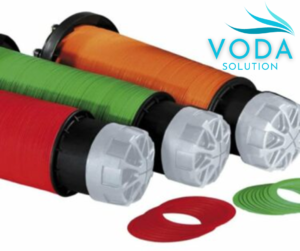
Mesh filter and discs
AZUD LCM Manual Disc Filter
Mesh filter and discs
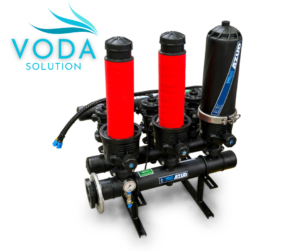
Mesh filter and discs
AZUD Helix Automatic 200 Series DLP Disc Filter
Filtration with ultra-filtration membranes
The mechanical separation of suspended or dissolved materials between 0.01 and 0.1 μm (micrometers) is made feasible by the membrane separation technique known as ultra-filtration, which is utilized in water treatment.
Ultra-filtration membranes are in contact with two liquid phases,
at different hydro-static pressures and there will be components of the liquid phase that will go from the high pressure side to the low pressure side.
Large dissolved molecules and suspended solids will be kept in the liquid, whereas small dissolved particles can pass through the porous membrane.
Ultra-filtration is generally used as pre-treatment in
surface water, seawater, groundwater, gray water treatment, biologically treated effluents and as pre-treatment of water to be re-treated with membrane de-mineralization systems .
Filtration with nano-filtration membranes
This filtration method called nano-filtration is usually used in water with low solids that are completely dissolved.
This system could be considered between reverse osmosis and ultra-filtration,
due to the levels it allows to separate and the pressures it needs for its application, the solids retained are between 0.001 to 0.01 μm (micrometers).
Generally this process is used to soften or soften water,
to eliminate heavy metals in wastewater, to decontaminate wastewater, to pretreat water before reverse osmosis,
to remove nitrates or remove colors.
It works through pressure on membranes that allow the concentration of organic solutes,
therefore, low molecular weight solutes are retained, but salts can pass totally or partially through the membrane.
There are two types of membranes for nanofiltration: spiral ones and tubular ones,
the former are more sensitive to pollution, although their quality is lower than the tubular ones.
Three streams are involved in reverse osmosis feed, concentration:
- The feed current is the current of the water that enters.
- There are two types of water currents in the permeate: purified water and concentrate.
- The concentrate refers to the water that could not pass through the membrane and that also contains the rejected salts.
Reverse osmosis filtration is the most used purification method in our times,
as it is very effective in eliminating almost all the ions from the water.
Due to its widespread use, it has become cheaper and replicated by many manufacturers.
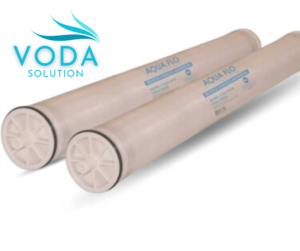
Reverse osmosis membranes
Aquaflo Ultra Low Pressure ULP Reverse Osmosis Membrane 4×40″
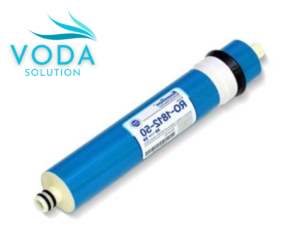
Domestic osmosis membranes , Reverse osmosis membranes
Reverse Osmosis Membrane – KeenSen 50 GPD
Conclusion:
There is no filtration method that is better than another, the important thing is to know how to identify which one works best for us depending on what task we are going to need it for, fortunately today there is a wide variety of options thanks to technology, so we hope May this article help you identify the best option for you.


The article posted was very informative and useful. You people are doing a great job. Keep going.
thank you for your kind response.
I am really loving the theme/design of your web site. Do you ever run into any browser compatibility problems? A few of my blog readers have complained about my website not working correctly in Explorer but looks great in Chrome. Do you have any tips to help fix this issue?
However, the successful transformation of learning goes beyond technology alone. It requires a shift in pedagogy, encouraging educators to adopt a facilitative role, guiding students through inquiry-based learning and fostering a growth mindset.
Thank you for another informative web site. Where else could I get that type of info written in such a perfect way? I’ve a project that I’m just now working on, and I’ve been on the look out for such information.
Greetings! I know this is kinda off topic but I was wondering which blog platform are you using for this site? I’m getting fed up of WordPress because I’ve had problems with hackers and I’m looking at alternatives for another platform. I would be awesome if you could point me in the direction of a good platform.
Wow! Thank you! I continually wanted to write on my blog something like that. Can I take a part of your post to my blog?